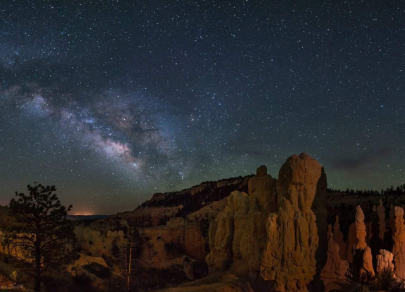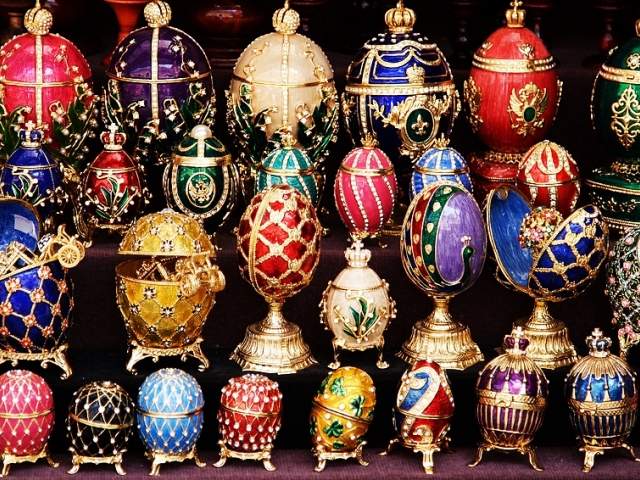
Top 5 locations for stargazing
Astrotourism is becoming more popular every year. People are willing to travel thousands of kilometers to admire the stars. But which places on Earth are considered the best for this? Let's find out now!




John Lackland's lost treasure
John Lackland could not imagine his life without luxury. After loosing the power, the king began to wander through the cities transporting the whole state.
King John lost all his treasure traveled from Spalding in Lincolnshire to Bishop's Lynn, in Norfolk. While he took the longer route by way of Wisbech, he sent his baggage train, including his crown jewels, along the causeway and ford across the mouth of the Wellstream. This route was usable only on the lower part of the tide. The horse-drawn wagons moved too slowly for the incoming tide, and many were lost.
Treasure hunters from USA and England have made a number of attempts to locate the exact place of the incident. Even a team of researchers from Nottingham University took soil samples in order to shed some light on the incident that took place in 1216.

Paititi: Legendary lost Inca city of gold
Oral Inca traditions tell of a magical kingdom hidden deep in the Amazon jungle, east of the Andes area of Cusco, Peru. This place is called Paititi: the Lost City of Gold.
Over the years many explorers, treasure hunters, and archaeologists have searched for the legendary city, but finding this mysterious place is far from easy. The Amazon jungle can be a dangerous and inhospitable place. Even the ruins of the city in the proposed area have not been found yet.
Many legends surrounds the lost city of Paititi. It is said to be the location where the ancient Incas, desperate to hide their treasure from marauding Europeans, stored all of their gold.According to a legend Paititi was built by the Inca hero Inkarri, who founded the city of Cusco before retreating into the jungle after Spanish conquerors arrived. When the Spaniards entered Cusco, they plundered gold and silver, but they only found a small portion of what existed in the Inca capital. The real gold treasure has never been found. The Inca hid it before the arrival of the conquistadors.

The Missing Kruger Millions
It's about the Transvaal Republic. During the Second Anglo-Boer War in South Africa, local residents realized that it would not be possible to keep the defense of the capital of Pretoria. It was decided to collect all the gold from the state reserves, banks and mines. Even the newly minted gold coins that had never been put into circulation were withdrawn. According to the stories, all the wealth was taken by the President of the country Paul Kruger, when he fled from the approaching British army towards present-day Mozambique. As a result of the escape, he boarded the ship and headed for France. At the same time, the further treasure's fate remains unknown. Nowadays, the Kruger National park was named after the former president.

The Copper Scroll
The Copper Scroll is one of the 981 texts found at Khirbet Qumran between 1946 and 1956, collectively known as the Dead Sea Scrolls. It holds special significance to Indiana Jones–hopefuls because it purports to be a treasure map. Written on very thin sheets of rolled-up copper, it is the only document found at Khirbet Qumran not written on either parchment or papyrus. In addition, the Hebrew which is inscribed onto it differs from that of the other scrolls. It is of a sort which was more commonly used hundreds of years later. The Copper Scroll mentions over 60 different locations, with varied amounts of gold and silver said to be buried or hidden at each of them. It is often highly specific, with directions such as in the gutter which is in the bottom of the rain-water tank. No evidence, other than the scroll itself, has ever been found to indicate the existence of these hoards, but that hasn't stopped a number of people from leading expeditions to find them.

Flor do Mar
In 1502, a Portuguese ship called the Flor do Mar, or Flower of the Sea, was constructed. Commanded by Vasco de Gamma's brother Estavao, the ship was part of a Portuguese voyage to India in 1505. The ship took part in several sea battles over the next six years until, in 1511, it was lost in a storm.Now, the idea of a warship with such a storied history alone would make for this being an intriguing lost treasure, but of course there is more to the story. Most notably the fact that the Flor do Mar was carrying a boatload of spoils from a recent victory. The fortune on board was said to be enormous, making the Flor do Mar the most sought after lost shipwreck in history. The ship is said to have carried the treasure of the Melaka kingdom, located in modern day Malaysia, which reportedly included more than sixty tons of gold.

Faberge Eggs
Series jewelry Carl Faberge created between 1885 and 1917 for the Russian imperial family and private buyers. Created in the greatest of secrecy, each Faberge egg was lovingly crafted for up to a year to ensure the perfect placement of every gem, precious metal, and secret within. The amazing eggs produced, were made from the most expensive and precious metals imaginable, coated with opaque, white enamel, and decorated with the finest gemstones and jewelry. Currently, there are only 42 Faberge Eggs in existence. These eggs have been hunted down by collectors, fetching astronomical prices at auctions. Many of the other Faberge Eggs have forever been lost to the sand dunes of time, history, and war.

Treasure of San Miguel
Around 1715 Spain had compiled a fleet of ships all filled to the brim with pearls, silver, gold, and jewels, which were estimated to be worth about $2 billion. The ships left from Cuba just before hurricane season to try prevent being invaded by pirates. This turned out to be a bad idea as the entire fleet of 11 ships sunk just six days after setting sail. As a result, $2 billion worth of treasure is now laying at the bottom of the sea.
Since this disastrous event, 7 of the ships have been located, but only a small amount of the valuable treasures have been recovered. It's believed that the treasure may be off the eastern shores of Florida, but most could be farther out to sea.

The Amber Room
The Amber Room is a well-known 18th century stone-carving art masterpiece, which was lost track of during the Great Patriotic War. The room, which is a small space created entirely out of amber panels with gold leaf and mirrors, was built in the 18th century for Friedrich I, the first king of Prussia. It was eventually gifted to Peter the Great, and remained in the possession of Russia until World War II. People who saw the Amber Room often referred to it as the Eighth Wonder of the World. In 2000 fragments of the original Amber Room were found and transferred to Russia. It is the Florentine mosaic Smell and Touch, one of the four mosaics that were made by request of Catherine II in 1787, and the amber chest of drawers, which was made by Berlin handicraftsmen in 1711 and used to take one of the central places in the Room furnishing.

Treasure of the Knights Templar
The Knights Templar formed in A.D. 1114, and over the following years accumulated a massive fortune, which has never been found.In the early 14th century, the Templars were ordered to be arrested, and those who escaped this capture and torture reportedly gathered the remaining treasure and loaded it onto ships to unknown destinations.

Oak Island Money Pit
One summer day in 1795 Daniel McGinnis, then a teenager, was wandering about Oak Island, Nova Scotia when he came across a curious circular depression in the ground. Standing over this depression was a tree whose branches had been cut in a way which looked like it had been used as a pulley. Having heard tales of pirates in the area he decided to return home to get friends and return later to investigate the hole.
Over the next several days McGinnis, along with friends John Smith and Anthony Vaughan, worked the hole. What they found astonished them. Two feet below the surface they came across of layer of flagstones covering the pit. At 10 feet down they ran into a layer of oak logs spanning the pit. Again at 20 feet and 30 feet they found the same thing, a layer of logs. Not being able to continue alone from here, they went home, but with plans of returning to search more.
It took the three discoverers 8 years, but they did return. Along with The Onslow Company, formed for the purpose of the search, they began digging again. They quickly got back to 30 foot point that had been reached 8 years ago. They continued down to 90 feet, finding a layer of oak logs at every 10 foot interval. Besides the boards, at 40 feet a layer of charcoal was found, at 50 feet a layer of putty, and at 60 feet a layer of coconut fiber.
At 90 feet one of the most puzzling clues was found - a stone inscribed with mysterious writing: “Forty feet below, two million pounds lie buried.” The huge disappointment was that in fact the mine is just a small part of the hydraulic engineering complex, which was connected to the other drainage tunnels. For several years, the partners separated the mine from the rest of the system by blocking the tunnels.
According to the information from the diary of one of the treasure hunters, an oak barrel was raised from the mine to the surface. And after that no more records were made. It was known only about Anthony Vaughan, who lived in London and was the owner of huge estates in Canada and England.

Astrotourism is becoming more popular every year. People are willing to travel thousands of kilometers to admire the stars. But which places on Earth are considered the best for this? Let's find out now!